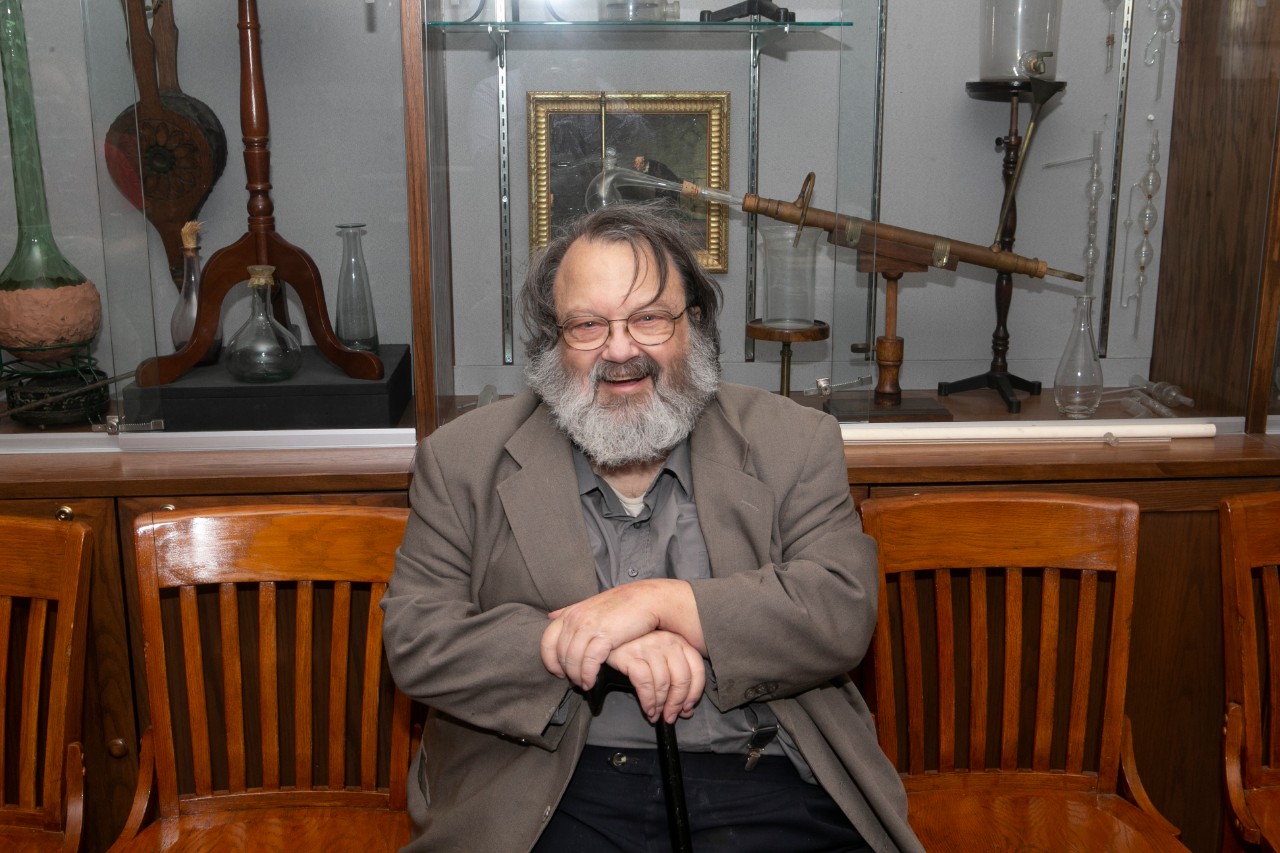
UC museum named national chemistry landmark
American Chemical Society recognizes UC’s Oesper Collections documenting centuries of science
The American Chemical Society this week named the University of Cincinnati’s chemistry museum a national historic chemical landmark.
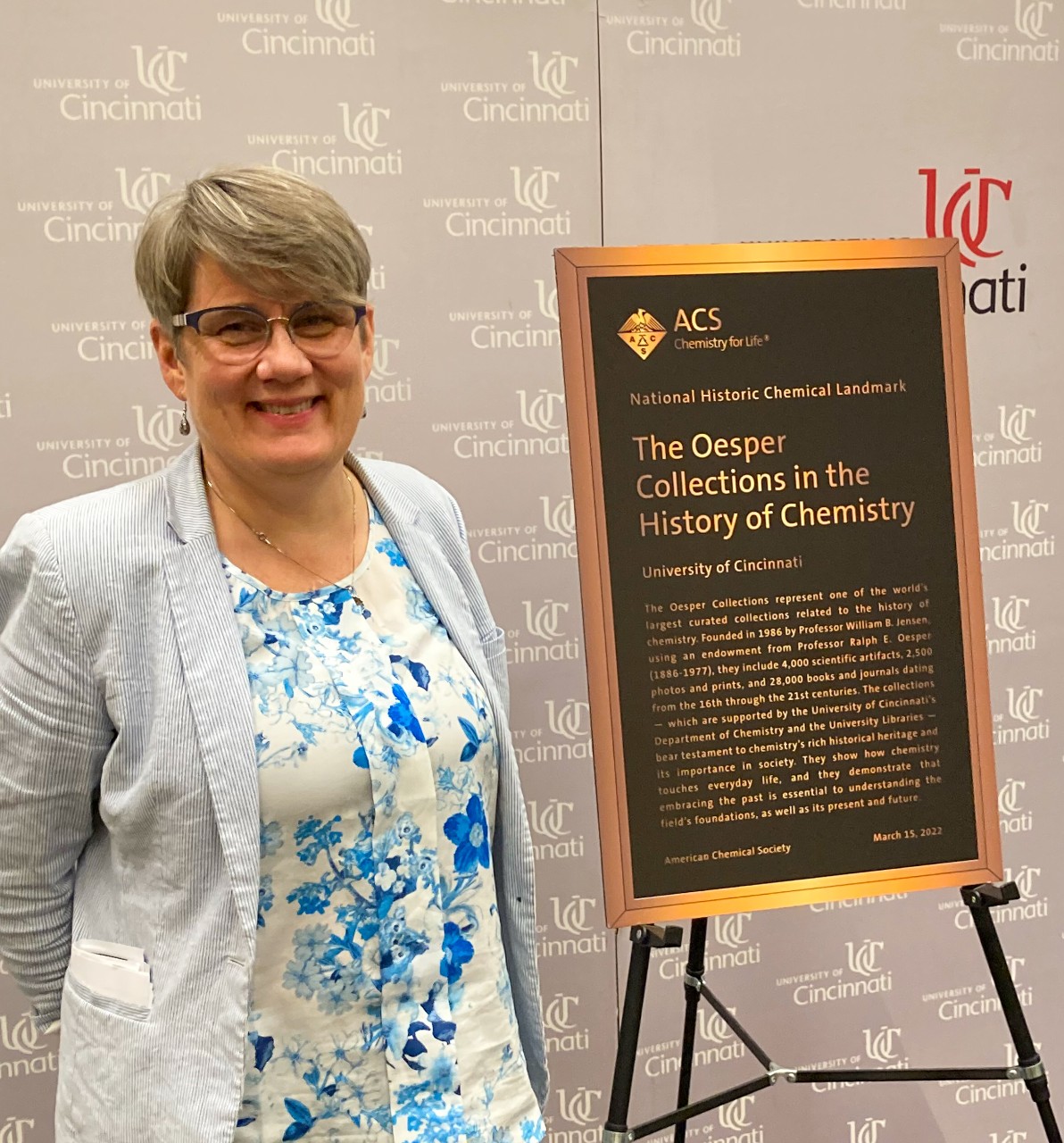
Anna Gudmundsdottir, acting department head of chemistry, stands next to a plaque dedicating UC's Oesper Collections as a national historic chemical landmark.
The nonprofit scientific organization recognized UC’s Oesper Collections, which document and preserve centuries of chemistry history through rare books and journals, scientific artifacts and photos and an exhibit depicting a 1900s era laboratory.
“The collections bear testimony to our field’s rich heritage and its central importance to society. They show how chemistry has touched everyday life for centuries,” American Chemical Society President Angela Wilson said.
“I believe there is no science that can have a greater impact on human life than chemistry — on health, food, energy, the environment and so much more. The Oesper Collections remind us that embracing the past is important to understanding the future.”
The Oesper Collections are national treasures — a crown jewel for the University of Cincinnati.
Xuemao Wang, UC Dean of Libraries

The American Chemical Society named the University of Cincinnati’s chemistry museum a national historic chemical landmark. Photo/Joseph Fuqua II/UC Creative + Brand
UC celebrated the recognition during a ceremony this week at Rieveschl Hall, where a bronze plaque will adorn the museum entrance.
“The Oesper Collections are national treasures — a crown jewel for the University of Cincinnati,” UC Dean of Libraries Xuemao Wang said.
The collection is named for longtime UC chemistry professor Ralph Oesper (1886-1977) who began to curate UC’s collection of rare chemistry books and journals from around the world. The Cincinnati native earned bachelor’s, master’s and doctoral degrees in chemistry from UC and taught chemistry at UC from 1918 until his retirement in 1951.
Oesper left endowments to UC supporting scholarship in chemistry and donated historically significant books, journals, prints and photos.
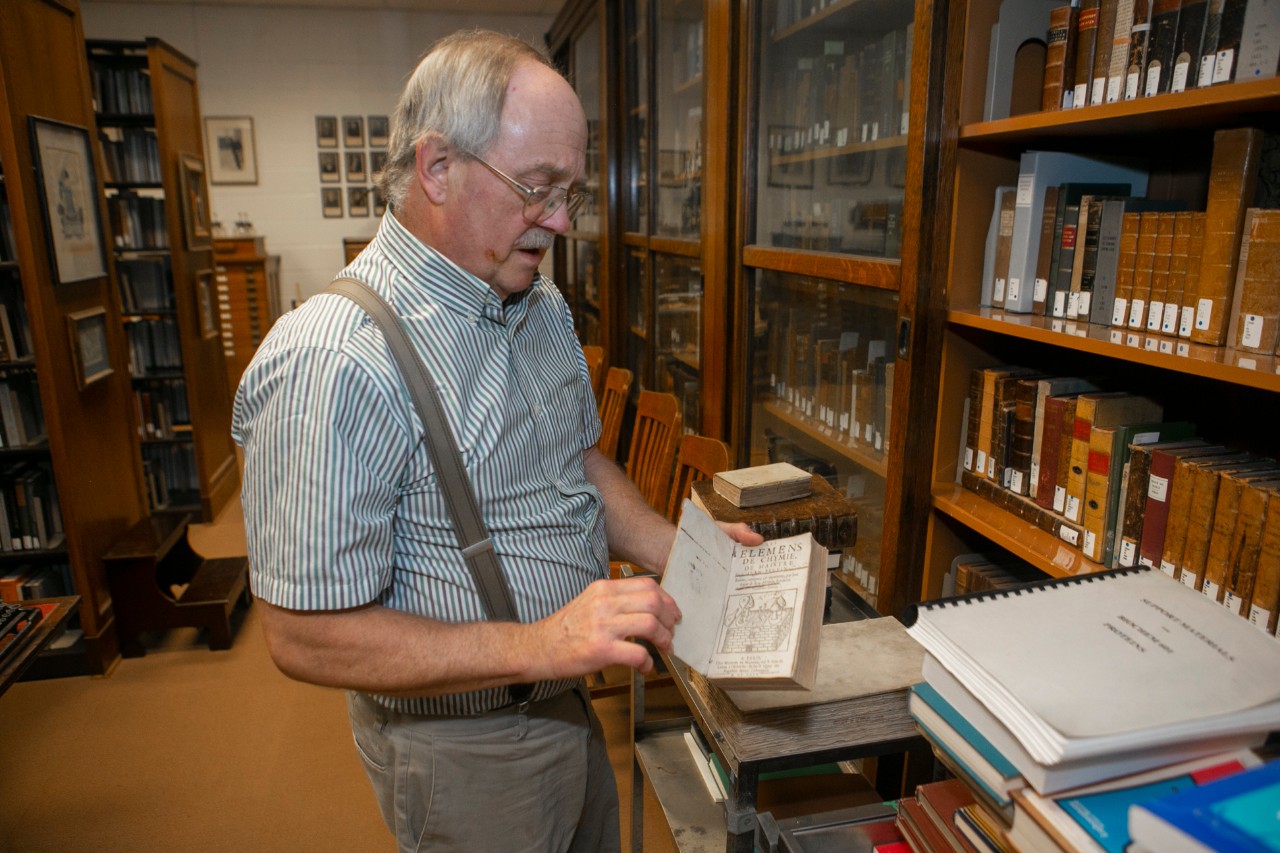
UC research associate Rudy Thomas opens a copy of the chemistry museum's "Elemens de Chymie" published in 1624. Photo/Joseph Fuqua II/UC Creative + Brand
UC professor emeritus William Jensen said Oesper published more than 300 papers in colloid chemistry, analytical chemistry and the history of chemistry, nearly half of which were translations of French or German. He also authored 12 books.
“He would live to be 91 years old. And he would remain active during the 26 years of his retirement, returning every year to the department to give a seminar on the history of chemistry,” Jensen said.
Jensen assumed the role of museum curator in 1986. He endeavored to expand the collection over the years, procuring rare chemistry texts and donations of unusual equipment from chemistry departments at universities far and wide.
“Initially,” Jensen said, “this was done by ransacking all the laboratories on campus for relevant antiques.”
During speaking engagements at universities across the country, Jensen sought access to laboratory storage areas and persuaded them to donate equipment that otherwise could have been lost to history.
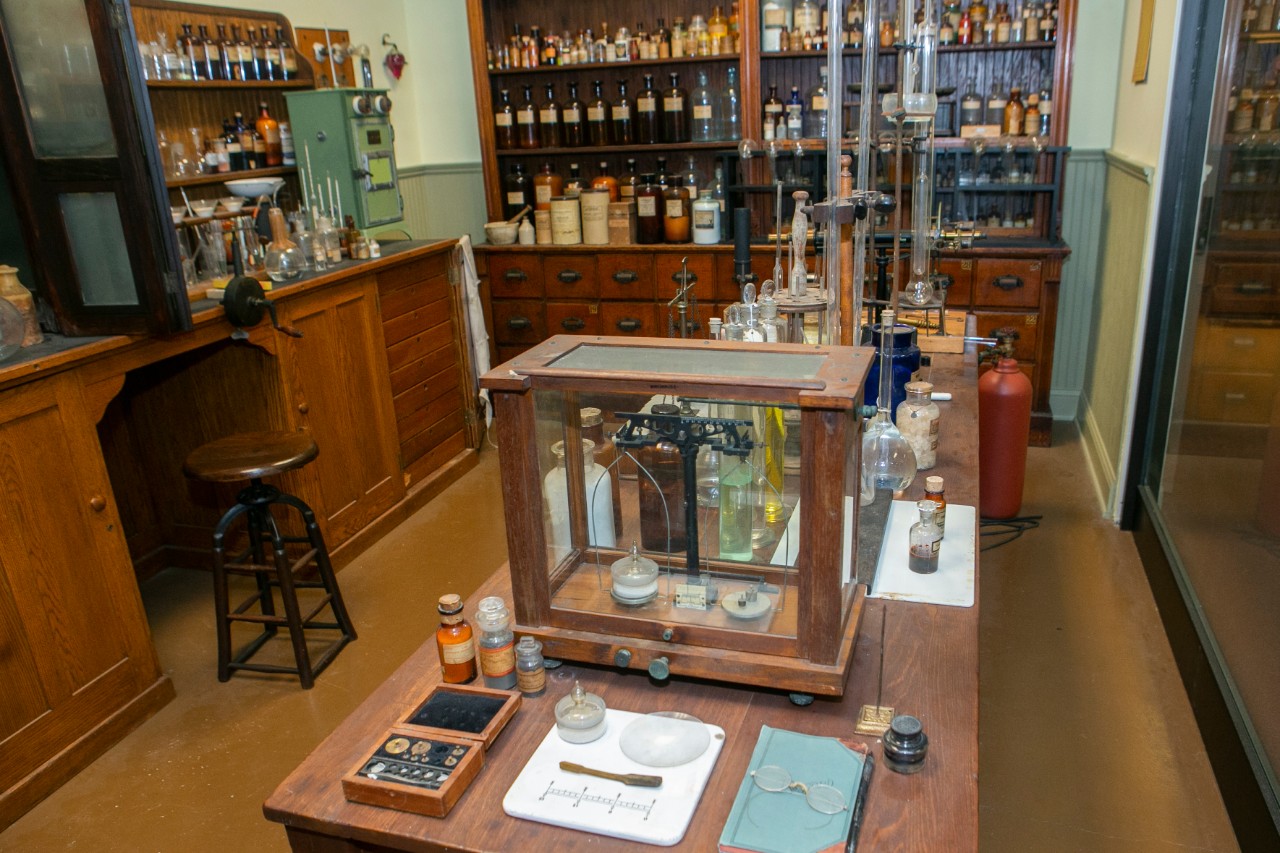
UC's chemistry museum features a 1900s era laboratory. Photo/Joseph Fuqua II/UC Creative + Brand
UC is one of the few universities in the United States with its own dedicated museum to chemistry. As word of the collection spread in chemistry circles, Jensen said he would receive regular donations of equipment and significant memorabilia.
“I received a package one day containing a beat-up 1940-circa Parker pen box,” Jensen said. “Inside was a broken piece of chalk and a small card which said in spidery handwriting: piece of chalk used by Albert Einstein at a talk at Princeton in 1948.”
Is it authentic? Maybe, Jensen said.
“I suspect there are as many pieces of chalk used by Einstein as there are slivers of the true cross,” he joked.
But the museum is a love letter to chemistry, with autographed photos of scientists such as Marie Curie, a framed letter from former U.S. President Herbert Hoover and chemistry and alchemy books dating back to the time of William Shakespeare — all presided over by a bust of the father of modern chemistry, Antoine Lavoisier.
“The most obvious thing to do with the endowment was to continue to expand the collections,” Jensen said. “This was done with the wonderful collaboration of UC Libraries. Today, we have one of the biggest collections in the United States of historic books, journals and images dealing with the history of chemistry.”
Featured image at top: UC professor emeritus William Jensen served as the longtime curator of the Oesper Collections in UC's chemistry museum. Photo/Joseph Fuqua II/UC Creative + Brand
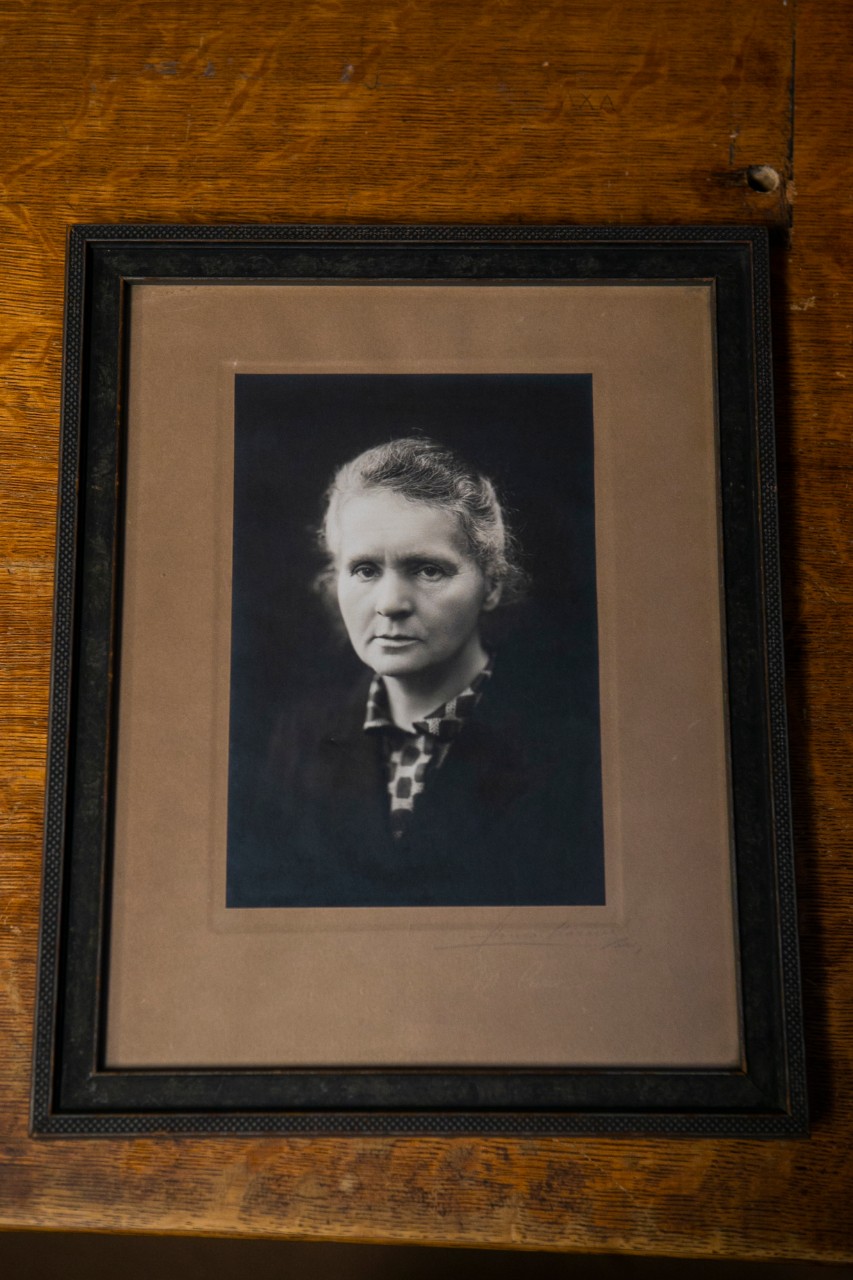
UC's Oesper Collections include an autographed photo of chemist Marie Curie. Photo/Joseph Fuqua II/UC Creative + Brand
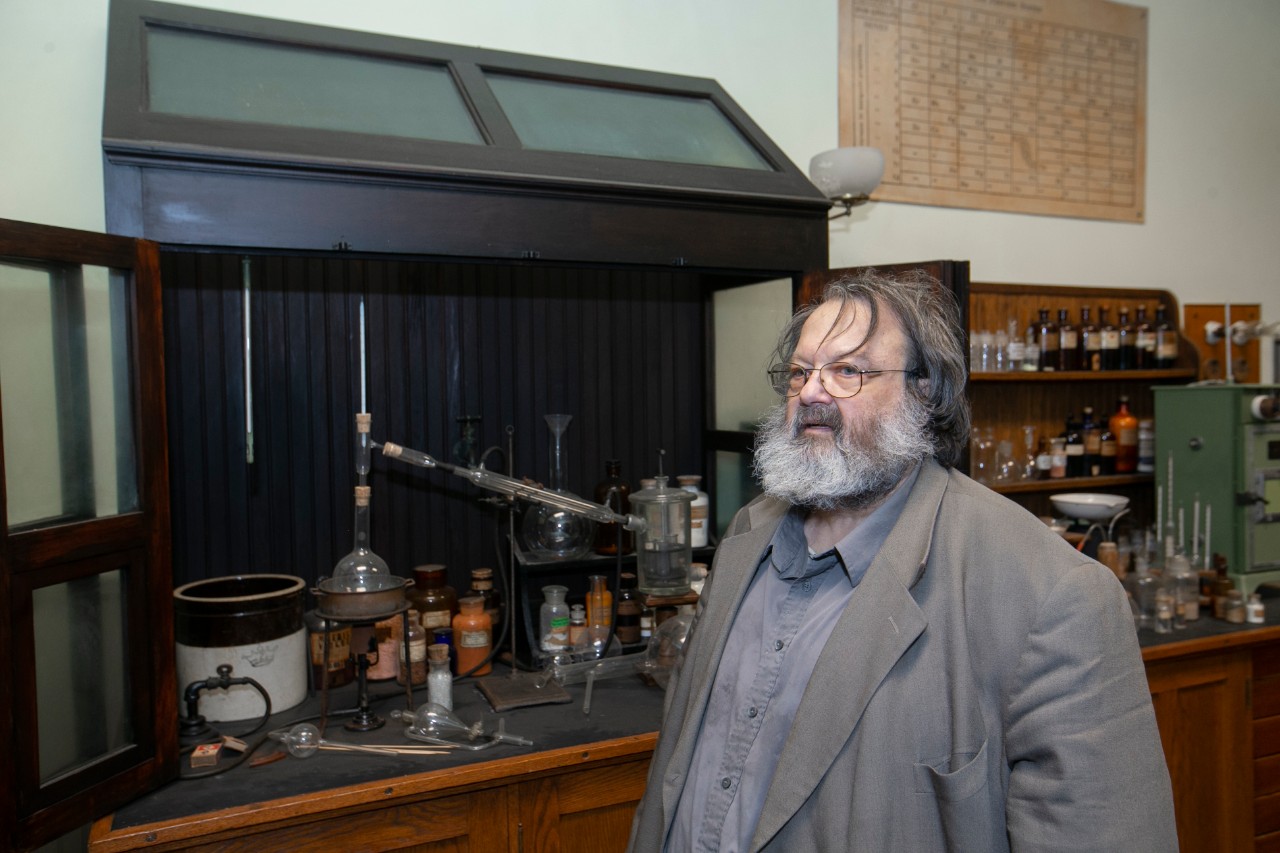
UC professor emeritus William Jensen gathered much of UC's antique chemistry equipment in the museum as its curator. Photo/Joseph Fuqua II/UC Creative + Brand
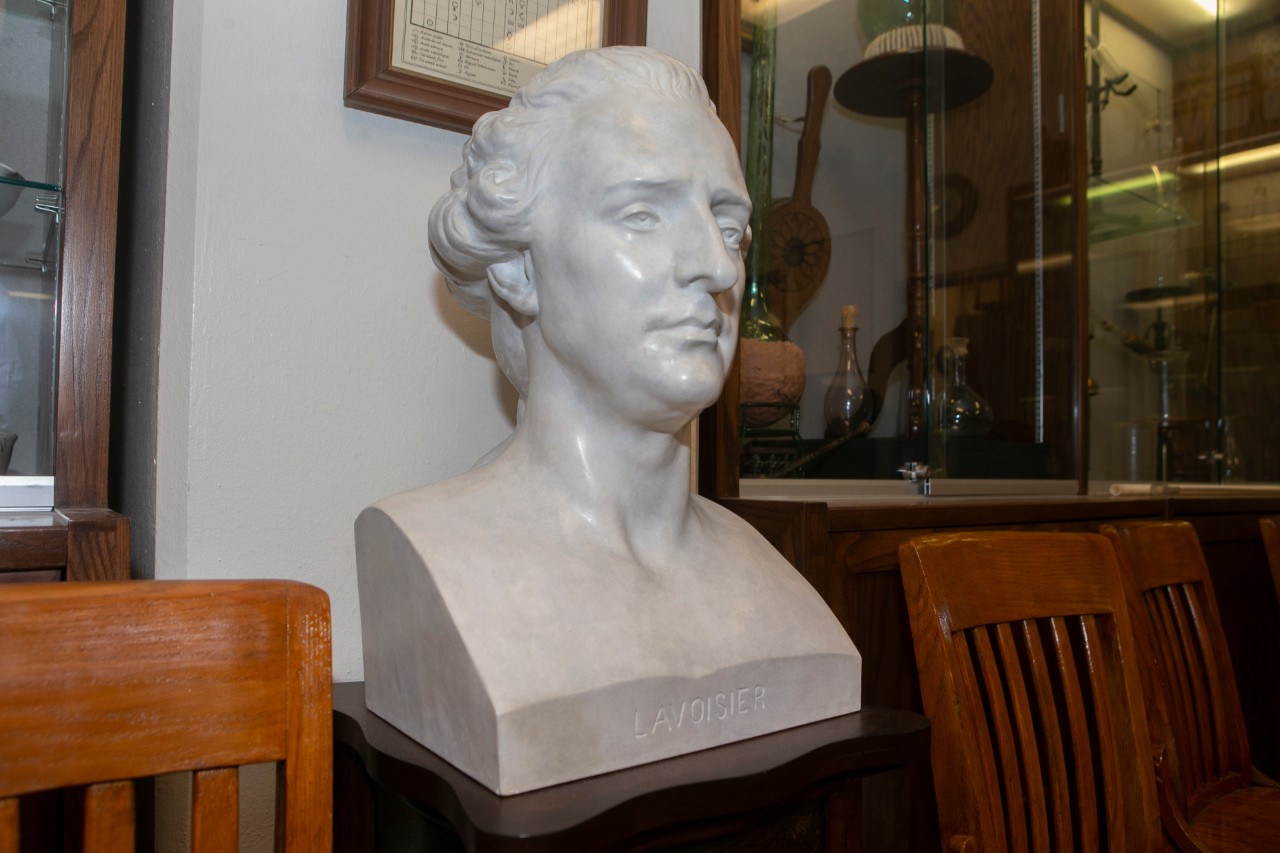
French chemist Antoine Lavoisier, known as the father of modern chemistry, presides over the museum's collections. Photo/Joseph Fuqua II/UC Creative + Brand
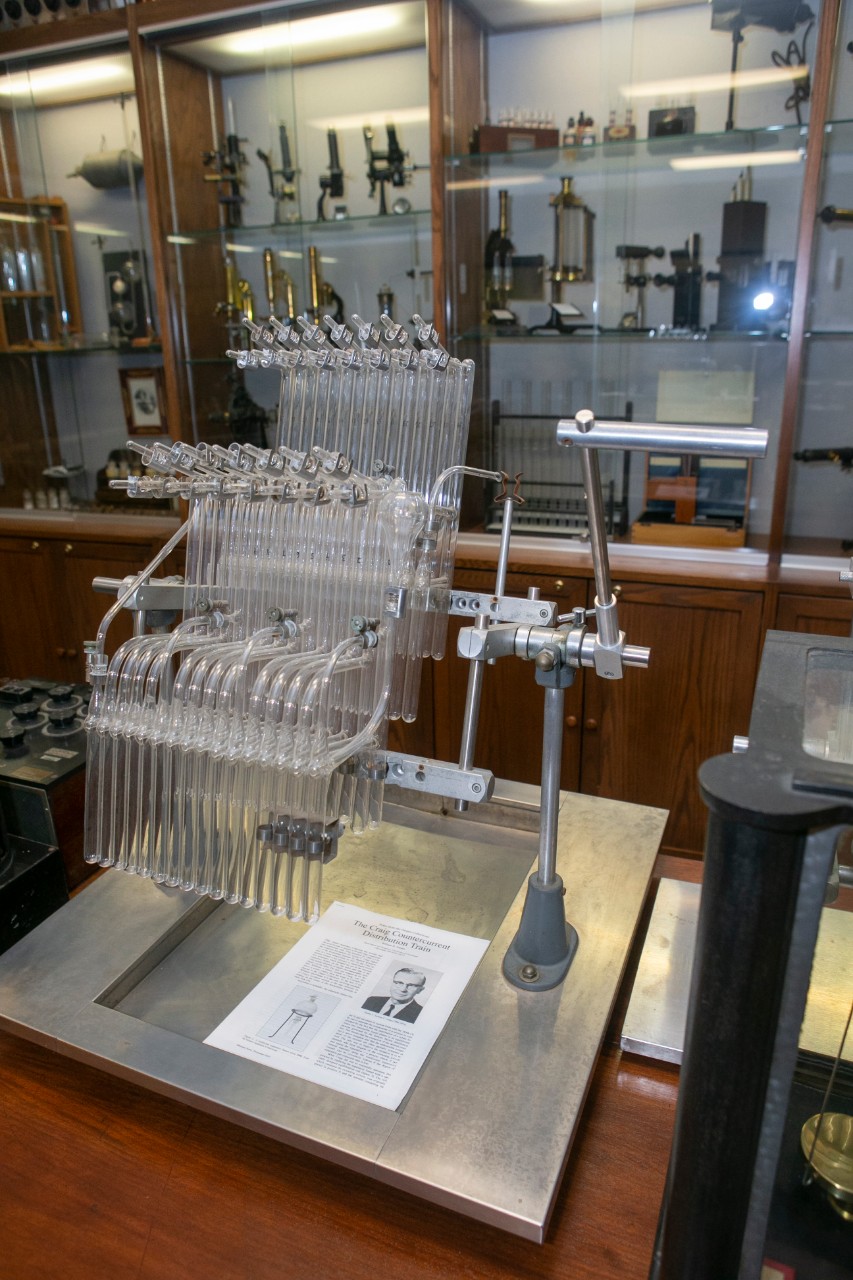
UC's chemistry museum features custom glassware equipment called a Craig countercurrent distribution train that chemists used to separate solutions. Photo/Joseph Fuqua II/UC Creative + Brand
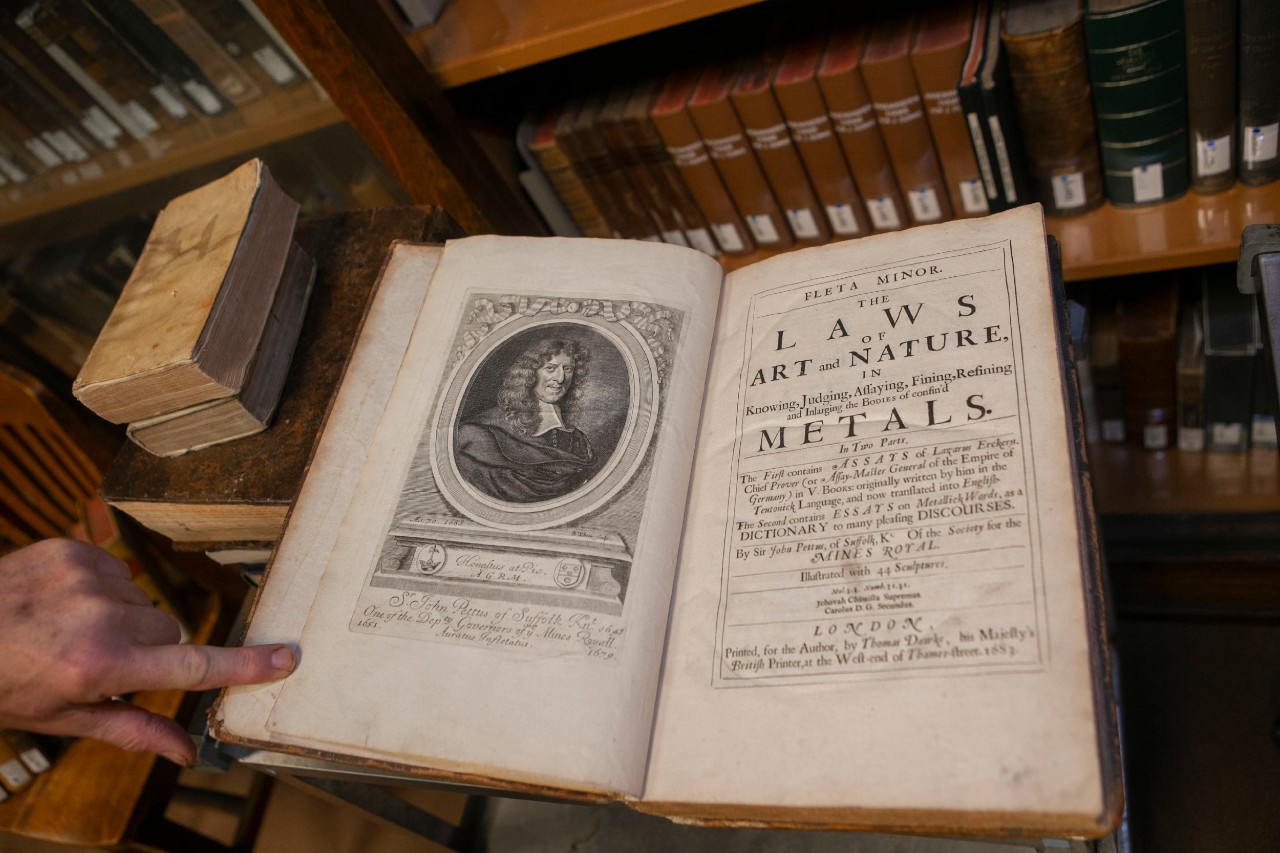
Before running for president, geologist Herbert Hoover and his wife, Lou Henry, translated a historic book on metals. UC's former chemistry museum curator, Ralph Oesper, purchased a copy during Hoover's successful presidential campaign. Photo/Joseph Fuqua II/UC Creative + Brand
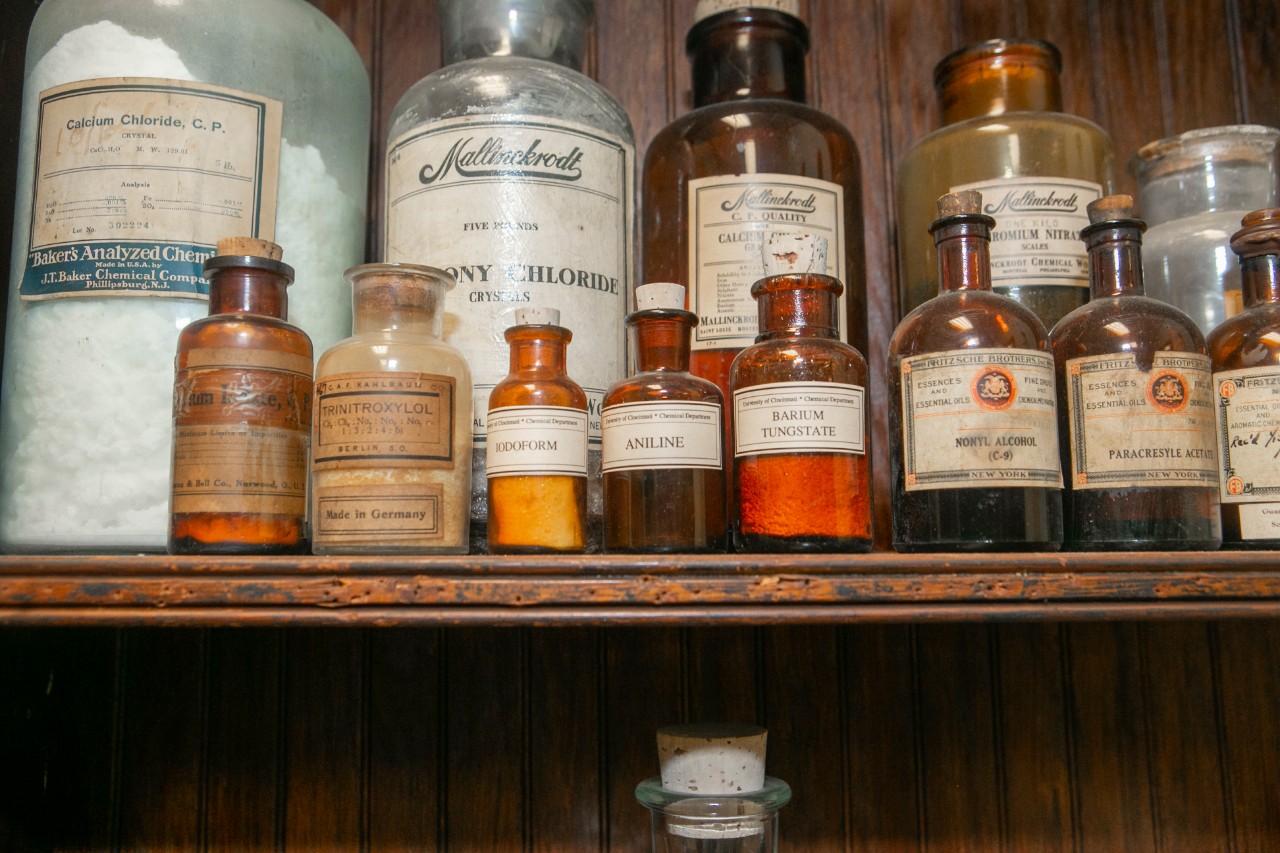
The museum's 1900s reproduction laboratory includes examples of chemical compounds used more than a century ago. Photo/Joseph Fuqua II/UC Creative + Brand
Impact Lives Here
The University of Cincinnati is leading public urban universities into a new era of innovation and impact. Our faculty, staff and students are saving lives, changing outcomes and bending the future in our city's direction. Next Lives Here.
Related Stories
Why jumping spiders mimic wasps
July 25, 2025
In nature's game of survival and attraction, appearances can deceive. University of Cincinnati biologists found that even artificial intelligence mistakes spiders for wasps. The question is why spiders would want to look like their predators.
What is geography?
July 25, 2025
If you like working with data analytics, traveling, or have an interest in why things are where, then there is a place in Geography for you. “If you say ‘Geography,’ most people think of the category on Jeopardy or memorizing their state capitals. Of course, that's very important too,” said Kevin Raleigh, UC’s Department Head of Geography, as well as the Interim Director of European Studies. “Geography looks at why things are important where.” The different uses of geographical knowledge have evolved but never lessened. Now that geographers have identified most, if not all, of the places on earth, they have the freedom to apply this knowledge to real world issues.
‘On the Fly!’ podcast explores the intersection of profit and...
July 25, 2025
Flywheel picked UC’s 1819 Innovation Hub to produce “On the Fly!,” its podcast spotlighting entrepreneurs whose businesses offer healthy returns on investment while driving positive change.
